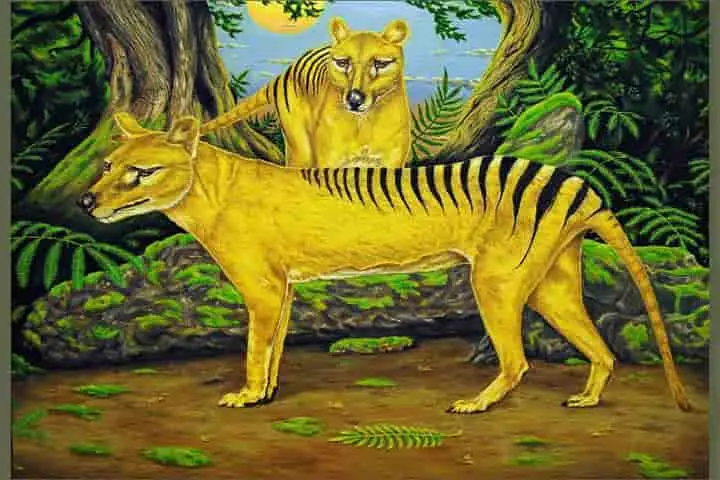Colossal Biosciences, a genetics start-up which is based in Texas, US made headlines as it made public its plan to bring back extinct thylacines or Tasmanian tigers or Tasmanian wolves. Incidentally, this same group had also announced last year a project on the same lines for the woolly mammoth.
By collaborating with the scientific community, the start-up as per a report in smithsonianmag.com hopes to bring back these creatures in the ecosystem of Tasmania. It will have a partnership with scientists at the University of Melbourne’s Thylacine Integrated Genetic Restoration Research Lab and invest in this lab $10 million. Besides it intends to speed up the endeavour of de-extinction by supplying equipment, lab access and staff.
Tasmanian tigers who looked like a dog and had pouches roamed Australia, Tasmania and New Guinea for millions of years. They were striped and their diet included small rodents, birds and kangaroos. The advent of Europeans changed the whole scene in the 1800s and early 1900s as they viewed these animals as pests and started exterminating them with the backing of the Government.
Continuous killing decreased their numbers rapidly and the species’ last known member called Benjamin died in 1936 in a zoo cage.
Contrary to expectations, the group’s plan was not met with enthusiasm. Talking to The Sydney Morning Herald, Jeremy Austin who is an evolutionary biologist at Australian Centre for Ancient DNA called it “a fairy tale science”. “It’s pretty clear to people like me that thylacine or mammoth de-extinction is more about media attention for the scientists and less about doing serious science.”
The project envisages sequencing the Tasmanian tiger’s genome from its preserved DNA while doing the same for one of its closest living relatives namely fat-tailed dunnart, which is a tiny marsupial. Following this the two sequencings will be studied and then using the technology to edit genes, the fat-tailed dunnart cell will be made to resemble that of thylacine. The cell’s nucleus will be introduced in the fat-tailed dunnart’s egg and the embryonic growth will be stimulated.
It is expected that a thylacine-like embryo will be developed in a surrogate dunnart mother or an artificial womb and after a gestation period of 42 days a Tasmanian tiger cub will be born. In the next 10 years it is expected that the creature that comes into being will be nearly 90 per cent like the Tasmanian tiger and the target is to make it match 99.9 per cent.
Ben Novak who is the lead scientist for Revive & Restore, a de-extinction nonprofit told Quanta Magazine: “You can never bring something back that is extinct.” The best that is possible is to create something which is very close to the vanished beings.
Colossal, when it succeeds in bringing back the Tasmanian tiger, wants to introduce them in Tasmania by working closely with conservation groups and Indigenous peoples. These animals who were on the top as the leading predator are expected to curb the growing numbers of kangaroos and wallabies while weeding out the sick ones in the ecosystem.
Highlighting the project’s aim, Andrew Park who is leading it told CNN: “Our ultimate goal with this technology is to restore these species to the wild, where they played absolutely essential roles in the ecosystem. Our ultimate hope is that you would be seeing them in the Tasmanian bushland again one day.”
Park is an epigeneticist at the University of Melbourne.
Critics of the project have voiced their concerns about several issues. Some said Indigenous Australians should be consulted now before embarking on the work while some have called the whole thing a means to grab publicity. Many feel that precious resources that are to be used could be utilised to save the threatened and vulnerable species. Members of the scientific community have raised the red flag about how it is not possible to change a fat-tailed dunnart’s genome to make it similar to that of the Tasmanian tiger as the two creatures are very different.
Treatment of the animals during the research is also an area of concern while many wonder as to what life will be like for these proxy thylacines. Meanwhile, the ethical aspect of the project too has come under limelight.




















